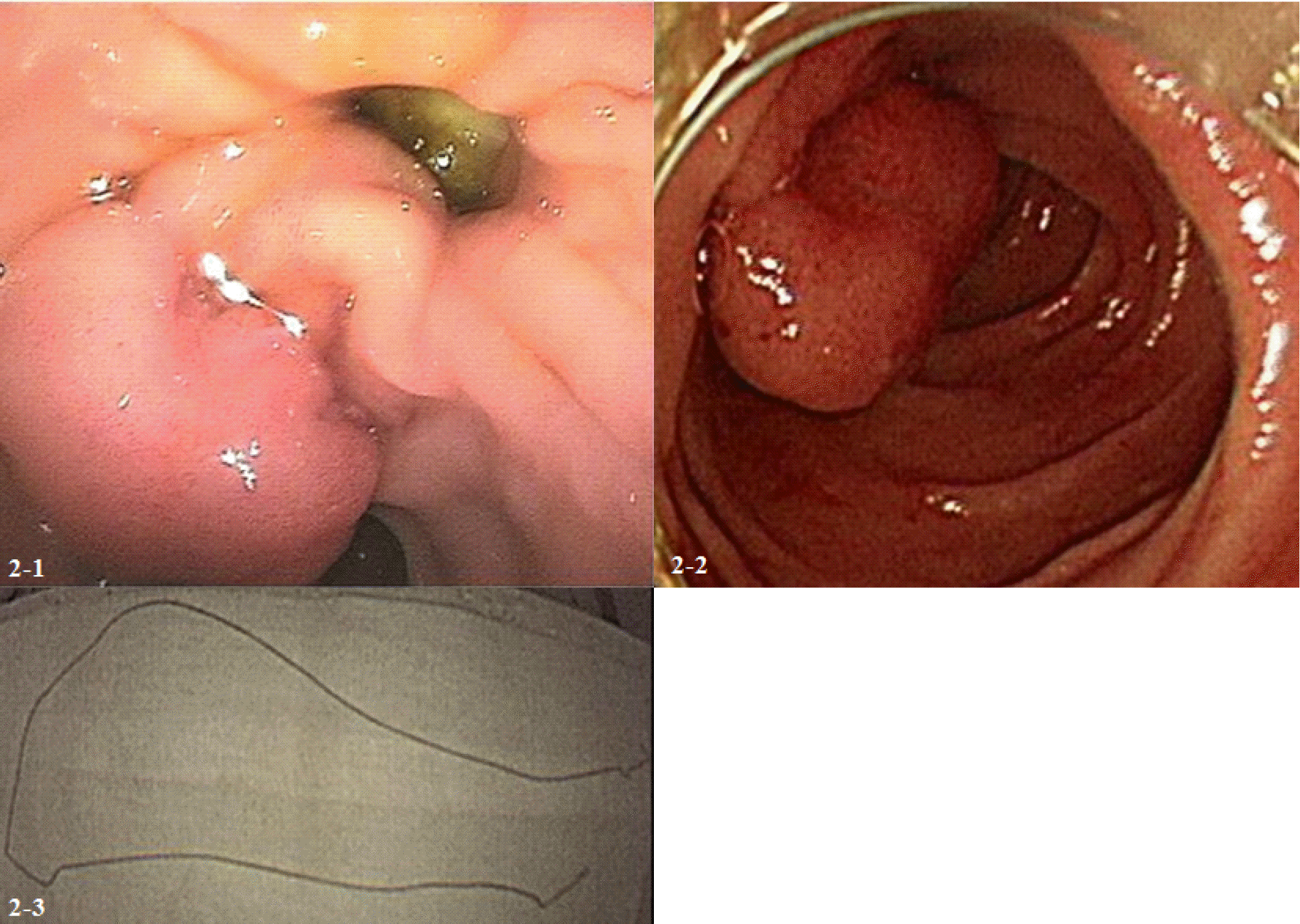Abstract
The percutaneous transhepatic biliary drainage (PTBD) is an effective intervention as a palliative therapy for relieving a jaundice and cholangitis. It may be used in place of Endoscopic retrograde cholangiopancreatography (ERCP) in the obstructive biliary disease. Recently, by developing invasive procedures, the incidence of the complications such as bleeding and perforation has been increasing in the diagnosis and treatment of hepatobiliary disease. We report here on a case of remained drawstring after PTBD in a 85-year-old man. The patient was conducted PTBD for relieving a jaundice and cholangitis. And then the patient had complained of abdominal pain constantly. A few days later, we removed PTBD and attempted ERCP for removal of CBD stone. The ERCP showed remained drawstring around ampulla of vater and we removed it by IT knife. The drawstring was successfully removed.
Go to : 
References
1. Nennstiel S, Weber A, Frick G, Haller B, Meining A, Schmid RM, et al. Drainage-related Complications in Percutaneous Transhepatic Biliary Drainage: An Analysis Over 10 Years. J Clin Gastroenterol. 2014.
2. Oh HC, Lee SK, Lee TY, Kwon S, Lee SS, Seo DW, et al. Analysis of percutaneous transhepatic cholangioscopy-related complications and the risk factors for those complications. Endoscopy. 2007; 39:731–6.

3. Enochsson L, Swahn F, Arnelo U, Nilsson M, Löhr M, Persson G. Nationwide, population-based data from 11,074 ERCP procedures from the Swedish Registry for Gallstone Surgery and ERCP. Gastrointestinal Endoscopy. 2010; 72:1175–84.

4. Eickhoff A, Schilling D, Jakobs R, Weickert U, Hartmann D, Eickhoff JC, et al. Long-term outcome of percutaneous transhepatic drainage for benign bile duct stenoses. Rocz Akad Med Bialymst. 2005; 50:155–60.
5. Nikola Y, Kolev , Valentin L, Ignatov , Tonev Anton Y., Zlatorov Aleksanmdar K., Encheva Elitsa P., Kirilova Tanya N., et al. BILIARY DRAINAGE. Journal of IMAB–Annual Proceeding (Scientific Papers). 2013; 19:465–9.
6. Günther R, Schild H, Thelen M. Review article: percutaneous transhepatic biliary drainage: experience with 311 procedures. Cardiovasc Intervent Radiol. 1988; 11:65–71.

7. Mayumi T, Someya K, Ootubo H, Takama T, Kido T, Kamezaki F, et al. Progression of Tokyo Guidelines and Japanese Guidelines for management of acute cholangitis and cholecystitis. J UOEH. 2013; 35:249–57.

8. Lee TH, Park SH, Lee SH, Lee CK, Lee SH, Chung IK, et al. Modified rendezvous intrahepatic bile duct cannulation technique to pass a PTBD catheter in ERCP. World J Gastroenterol. 2010; 16:5388.

9. Kühn JP, Busemann A, Lerch MM, Heidecke CD, Hosten N, Puls R. Percutaneous biliary drainage in patients with nondilated intrahepatic bile ducts compared with patients with dilated intrahepatic bile ducts. AJR Am J Roentgenol. 2010; 195:851–7.
10. Oberholzer K, Pitton M, Mildenberger P, Lechner C, Düber C, Thelen M. [The current value of percutaneous transhepatic biliary drainage]. RoFo. 2002; 174:1081–8.
Go to : 
 | Fig. 1.Black arrow in abdomen CT demonstrating 9mm sized biliary stone in the distal common bile duct. |
 | Fig. 2–1.Endoscopy showed an ampulla of vater tightened by a remained drawstring after removing percutaneous transhepatic biliary drainage. Fig. 2–2. Endoscopy showed an ampulla of vater after removing a remained drawstring. Fig. 2–3. The remained drawstring to prevent a drainage tube from falling into the body. |




 PDF
PDF ePub
ePub Citation
Citation Print
Print



 XML Download
XML Download